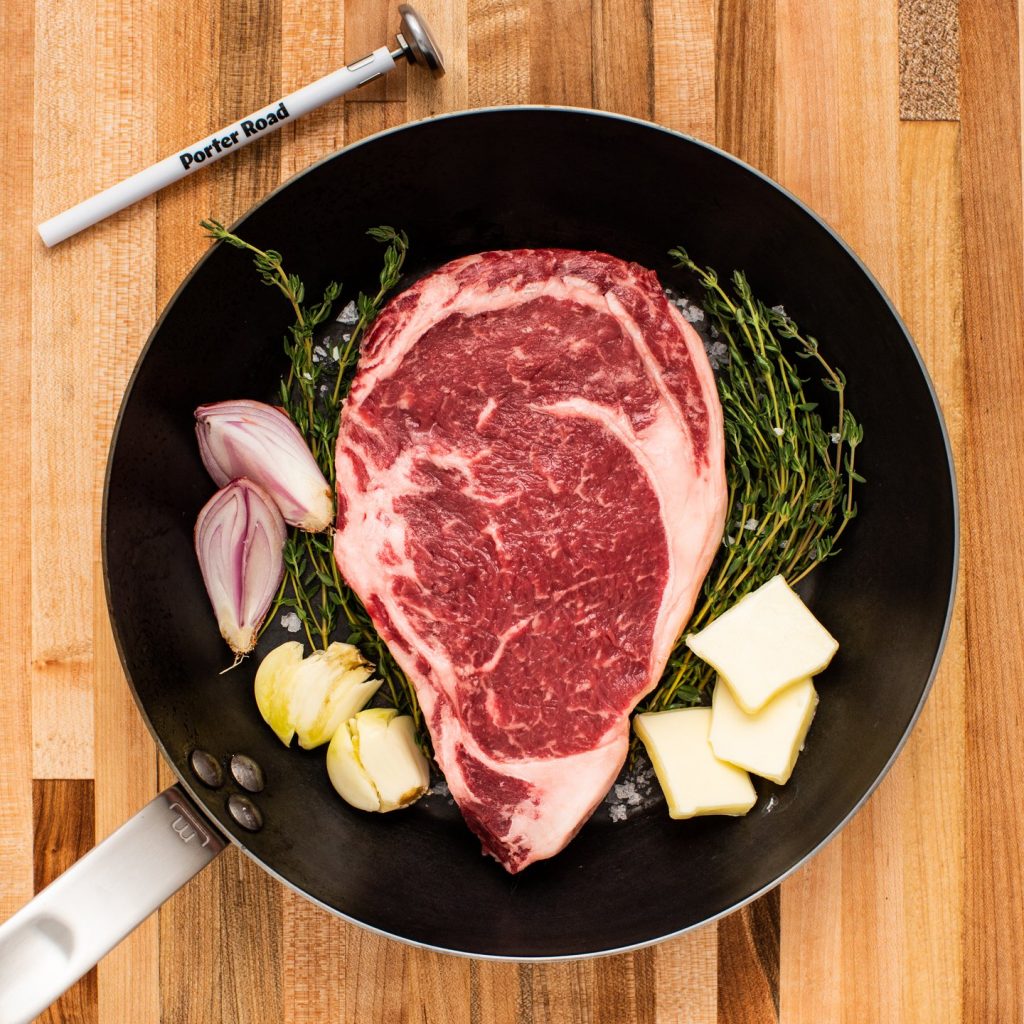
Charcoal chimneys, also called chimney starters, are an inexpensive addition to your charcoal grilling toolkit. These simple devices can remove a lot of the hassle of getting a good charcoal fire started. Read on to find out what they can do for you, and how to use one properly.
What Are the Benefits of a Charcoal Chimney?
We all like to think of ourselves as Jack London outdoorsmen and women who could start a fire in the wilderness with nothing but a couple of twigs and a tuft of dry grass. But in reality, it can be tedious and frustrating to get a proper fire going in a pile of charcoal, especially if you want to get all the coals burning evenly instead of making a patchwork of hot and cold spots.
Also, lighter fluid is terrible and no one should use it. Lighter fluid, as well as cheap charcoal briquettes or “instant light” charcoal, is full of volatile chemicals that burn easily — but as they burn off, they evaporate and get deposited on your food, leading to that unforgettable petroleum refinery taste. Which is exactly what you shouldn’t want if you’re cooking with charcoal.
A charcoal chimney solves both of these problems. It’s close to idiotproof: if you can light a match, you can produce a bed of beautiful glowing coals every time. And a chimney keeps you from needing lighter fluid, and will burn off any unpleasant volatiles that might be clinging to your fuel before you start cooking, enabling you to get that charcoal-cooked taste you want out of a grill.
The one disadvantage of a charcoal chimney is that it requires time to get the coals properly heated up, but if you’re that impatient, you’re probably cooking on a gas or electric grill instead.
What to Look For When Buying a Charcoal Chimney
– Solid metal construction. Avoid thin, cheap metal — you want something with a bit of heft to it. Some chimneys are plain metal, others are covered with heatproof paint. Both types work fine. Your chimney will probably scorch and discolor after a few uses anyway, so you’re not buying this thing for looks.
– A firmly attached and nonconductive handle, usually wood or plastic. You’ll be picking up an extremely hot metal object that’s full of burning coals, so you want a handle that you can grip and manipulate confidently. And make sure the handle isn’t too close to the body of the chimney, because you’ll also want…

– A heat shield between the handle and the body of the chimney. Charcoal chimneys get hot when they’re in use, and you’ll want something that can protect your knuckles from the heat coming off the chimney. You may also want to have an oven mitt or leather or heavy canvas glove available when you use the chimney, for a little extra safety.
– Enough capacity to fill your cooker in one load. You want to only have to use the chimney once before you get to work.
– Enough room in the kindling chamber to fit at least a couple of crumpled sheets of newspaper without too much packing. You want air to be able to circulate freely around your kindling.
Some chimneys have switches that allow you to automatically dump the coals out of the bottom when they’re done, and others require you to turn them over and empty them manually. Which one you use is a matter of personal preference.
How to Use a Charcoal Chimney
- Fill the chimney with the rock of your choice. Anything from fancy hardwood charcoal to cheapie supermarket briquettes will work.
- Make sure the bottom air vents are clear, and pack the bottom chamber with a couple of pages of newspaper or kindling wood.
- Put the chimney on a stable, fireproof surface, preferably raised for better air flow. One of the best places is right on top of your barbecue grill. If you can’t manage that, then try putting it on a couple of bricks (with space between so air can enter the bottom more easily).
- Light the kindling or newspaper. Do not use lighter fluid. There should be smoke as the kindling burns through, but it should subside after a couple of minutes. Check to make sure the bottom coals are burning; you should be able to feel heat radiating up out of the chimney and perhaps see a reddish-orange glow on the bottom coals if they’ve caught properly.
- Go do something else. Or, if there are kids or pets or your idiot brother-in-law around, stay in the area and keep an eye on the chimney to make sure no one does anything stupid.
- The amount of time it takes the chimney to work depends heavily on the size and style of chimney you’re using, as well as your choice of charcoal. 20 minutes is a good ballpark figure. When the coals at the top of the chimney turn slightly gray and ashy, they’re ready for cooking.
- Remove the cooker grill and dump the coals in. There will probably be flying sparks. Having a pair of tongs handy will help you quickly spread the coals into an even layer for cooking. If you find you don’t have enough coals (why didn’t you get a big enough chimney?), mix some extras in with the already hot ones.
- Set the hot chimney somewhere fireproof, secure, and out of the way to cool down.
- Charcoal chimneys don’t really require a lot of maintenance. Once it’s cooled, just give it a bit of a wipe with a cloth to remove any ashy residue left behind, and it will be all ready for the next time.

Hopefully this article has inspired you to try a charcoal chimney starter for yourself. Once you’ve seen what they can do for your grilling, you won’t ever want to go back to lighter fluid!


